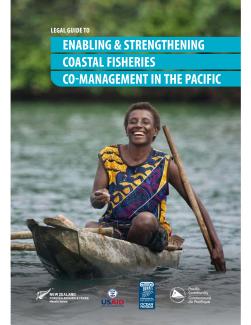
Island communities in the Pacific region rely on fishing for food and livelihoods, but coastal marine resources are under threat from both natural and human pressures that are leading to their decline. It is essential that local communities, which often have traditional user rights or ownership rights over coastal areas and the marine resources in those areas, play a leading role in managing the resources on which they depend. In many cases they already do, with management being based on local and traditional practices and supported by projects and programmes of both governmental and non-governmental entities. However, not all current legislation is supportive of co-management or adapted to local circumstances. Enabling legislation is key to formalising and scaling up existing, community-based fisheries management (CBFM) systems and practices. For law and practice to converge, fisheries agencies in PICTs have the difficult task of driving change both within the government and in communities. Promoting legal reform at the government level to fully recognise CBFM, while ensuring the effective participation of local communities to reflect their needs and practices, will be crucial.
This guide is intended to support fisheries agencies of Pacific Island countries and territories in assessing and improving their co-management legislative frameworks to enable local fishing communities to meet their aspirations for healthy coastal ecosystems while preserving their livelihoods. It is addressed to fisheries policy and planning officers, legal officers and, broadly, fisheries managers and community-based fisheries management practitioners. While the guide offers examples of provisions illustrating how fisheries co-management systems work in different countries, these provisions should not be simply adopted by a country that seeks to create or revise its co-management laws. Instead, each country’s existing legal framework, local context and needs should be carefully analysed before drafting co-management provisions.